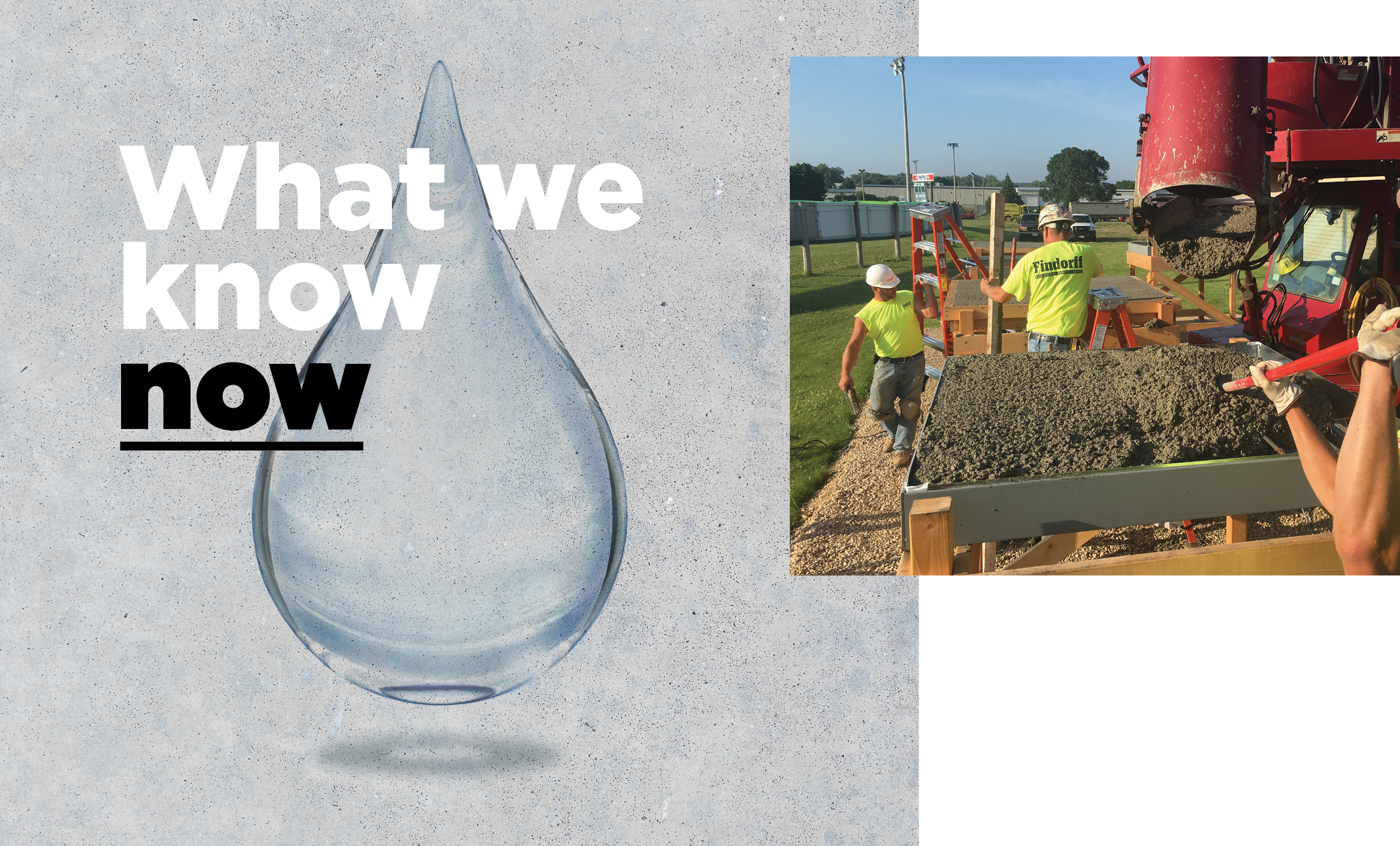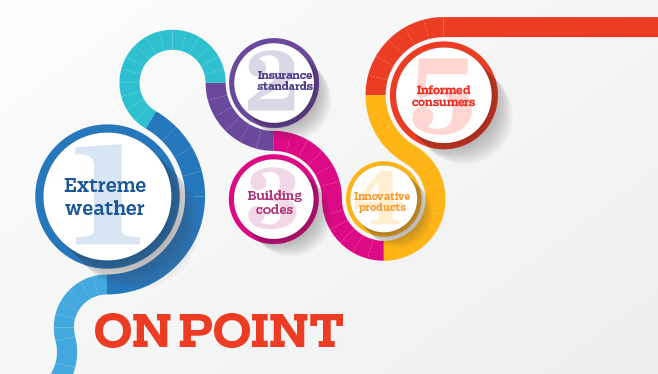“You’ve got to be very careful if you don’t know where you are going because you might not get there.”
—Yogi Berra
If you are like most roofing contractors, your daily workload is so intense you rarely have time to reflect on overall company performance and ways to improve. We all want to spend time on strategy and growth opportunities, but the reality of our lives makes it challenging to do so.
To prevent ourselves from falling into a visionless trap, my team holds quarterly and annual off-site planning sessions to ensure the future direction of our company. We go off site so there are no distractions, and we remain focused on working on the business rather than being physically in the business. Following is the agenda we use and the processes and benefits of each step.
Objectives
Setting clear objectives will help your team stay focused and ensure you are getting the most from your meetings. Following is a list of objectives we use:
- Increase team health
- Clear company vision
- Clear issues list
- Clear plan to achieve vision
- Clear plan for the next quarter (or year)
- Resolve all key issues
Day 1
The check-in process starts with a review of the past quarter (or year). We take five minutes and ask each member of the executive leadership team to write down three business greats, an unexpected business great, and a personal great he or she experienced during the quarter (or year). After the five minutes are up, everyone reads his or her answers aloud.
The next step is to take another five minutes to write down expectations for the off-site meeting. Usually, this includes three to seven things such as team alignment in vision, agreement on future and strategies, agreement on big decisions for the company, and resolution of key items or issues. Once again, each team member should share what he or she expects to achieve from the planning session.
Review
Taking a moment to reflect on your company’s past wins and losses is critical to future improvement. Celebrate the wins and all the hard work that went into achieving them. If there are losses, that means there are mistakes to learn from. This is the opportunity for goals, accomplishments and team focus points to be discussed. And there should be no ambiguity: You either hit your goals or you didn’t.
Team health
The team health portion of the agenda can take many forms. Examples include reading a chapter from Patrick Lencioni’s The Five Dysfunctions of a Team: A Leadership Fable; having a “clear the air” meeting; discussing Kolbe A™ Index or Myers-Briggs personality profile test results; going through a personal history exercise; or my personal favorite, the One Thing exercise. The One Thing exercise is where you discover things others know about you that you don’t know about yourself.
The key here is building trust. Without trust, there is no way to achieve true team health. A healthy team builds upon trust to resolve conflict, commit to each other, hold each other accountable and produce outstanding results. Start with a volunteer. One by one, each person in the room starts by telling the individual something they admire about him or her. Then, they suggest one thing that person should start or stop doing. After everyone has spoken, the individual picks one of the suggestions and commits to working on improving that year. It’s important to be vulnerable.
After the exercise, the one thing is added to weekly or quarterly agendas and honest feedback is provided from others at the meeting about how well each person is achieving his or her goal. My current yearly commitment is listed in our weekly meeting agenda, and I read it aloud each week: “In 2020, I commit to stop marking tasks complete without Eddie’s approval first. How am I doing?”
Organizational checkup
Now is the opportunity to look inward and see how your company is performing. Each participant should be asked to rank the following statements between one and five with five being strong.
- We have a clear vision in writing that has been properly communicated and shared with everyone in the company.
- Our core values are clear, and we base hiring, evaluating and firing decisions around them.
- Our core business is clear, and we keep our people, systems and processes aligned and focused on it.
- Our long-range big business goal is clear, communicated regularly and shared by all.
- Our target market and definition of our ideal customer are clear, and all our marketing and sales efforts are focused on them.
- Our differentiators are clear, and all our marketing and sales efforts communicate them.
- We have a proven process for doing business with our customers. It has been named and visually illustrated, and our salespeople use it.
- All the people in our organization are the right people, and they fit our culture and share our core values.
- Our organizational chart includes roles and responsibilities that are clear, complete and constantly updated.
- Everyone is in the right position, and each has the capacity to do his or her job well.
- Our leadership team is open and honest and demonstrates a high level of trust.
- Everyone has one to seven priorities per quarter and is focused on them.
- Everyone is engaged in regular weekly meetings.
- All meetings are on the same day and at the same time each week, have the same agenda, start on time and end on time.
- All teams clearly identify, discuss and solve issues for the long-term greater good of the company.
- Our core processes are documented, simplified and followed by all to consistently produce the results we want.
- We have systems for receiving regular feedback from customers and employees so we always know their levels of satisfaction.
- A scorecard for tracking weekly metrics and measurables is in place.
- Everyone in the organization has at least one responsibility he or she is accountable for keeping on track each week.
- We have a budget and are monitoring it regularly.
To use this organizational checkup correctly, add the scores for each statement. For instance, if someone answered 5 to every statement, it would equal 100. Average all the team members’ scores. A healthy organization averages 80 or better. It’s common to start out below 30, so don’t get discouraged. Go through the statements again looking for areas of improvement. Write these down on an issues list.
SWOT analysis
Immediately following the organizational checkup, we go into a SWOT (strengths, weaknesses, opportunities and threats) analysis. We take as much time as needed for each of the four items and write down as much as possible. Once everyone is done writing, one topic is presented at a time. Make sure there is a facilitator to record each of the items, writing them in plain view for all to see on a whiteboard or large piece of paper that sticks to the wall. Here is how each step is defined:
- Strengths: what your company does well
- Weaknesses: what your company does not do well
- Opportunities: areas of improvement or growth
- Threats: things that could jeopardize the company
Vision
The next step is to review your business plan to ensure it matches your vision. Now is the opportunity to update your company’s vision if necessary so it is as accurate as possible. Items such as core values, purpose, cause, passion, niche, ideal customer and marketing strategy all should be confirmed.
Three-year picture
Next, pick a date three years into the future. On that date ask: “What will your revenue, profit and key measurables be?” Write each down at the top of the page. Now, think about what that would look like from an operational standpoint. We include items such as key positions, number of crews, number of employees in each major position, location growth, software changes, key marketing strategies, major purchases, safety initiatives, divisions, estimates given and anything that helps make it clear what the company will look like in three years. Remember to look over all the issues that were written down after you went through the organizational checkup to ensure any areas that need improvement are taken into consideration.
Break
Usually, this is all we do during the first day, and we go enjoy a nice dinner together. Taking the opportunity to think about what happened during the day and get our minds off the next task helps us to think freely and ensure everything we came up with on the first day is accurate and attainable. Everyone should get a good night’s sleep and be prepared for the following day.
Day 2
To start the second day of meetings, reread your expectations, highlight any big wins from the previous day and discuss what you would like to get out of the second day. Review the issues list and three-year picture from the previous day to ensure they are top of mind.
One-year plan
Start by reviewing the three-year picture in detail. Next, review the SWOT analysis for areas of improvement. Scan the issues list for any big issues that are a priority. Then, decide what can be accomplished this year. Remember, you can’t do it all. Prioritize the three to seven most important items that must be accomplished this year to achieve your three-year goals. Include revenue, profit and measurables at the top of the page.
Urge participants to consider what must change or be improved to meet the three-year picture. Once everyone is done writing, present one at a time and record the items. After each person has had the opportunity to present his or her list, go back and discuss each one in detail. Does everyone on the team agree it is one of the most important things the company must focus on? Is it a big item that would take most of the year to accomplish? Is it something that could involve multiple divisions or span the company? (Although not necessary, it’s often good to think of it in these terms.) Remember, less is more. If everything is important, then nothing is important.
With the goals defined, make them SMART: specific, measurable, achievable, relevant and timely. An example may be to start a repair division. That’s a good goal for a company, but it’s not yet SMART. A better goal would be to start a repair division focusing on EPDM repairs in your immediate market generating $500,000 in revenue for the year, employing four people and using two dedicated vehicles. The key is to know what the goal looks like when accomplished. More important, as the team continues to meet, it becomes obvious whether a goal is on track. The one piece that tends to trip up our team is “achievable.” Remember, 95% done is not done. Can you realistically complete the goal in the given time?
Rocks
Next, take five minutes and look over the one-year plan and all the issues listed. Consider tasks you and/or your team must complete this quarter to achieve the plan, solve problems or take advantage of an opportunity propelling the company forward. Write down each item.
This is an opportunity for team members to help keep, eliminate, mold, enhance or simplify each task. Once a rock, or quarterly goal, is SMART, it’s committed to for that quarter by team members. This concept comes from the book Mastering the Rockefeller Habits by Vern Harnish. John D. Rockefeller understood human nature well and realized our attention span only stays focused for about 90 days before waning. When a rock is in your way, it can’t be moved or avoided; it must be crushed. No matter what happens during the quarter, rocks are the priority. Rocks are divided into 12 weekly tasks, and each weekly task is added to a rock planning sheet. The rock planning sheet helps prove whether the rock completion is on or off track throughout the quarter.
IDS
Looking at your issues list, perform a keep/kill/combine exercise. After the yearly goals and rocks have been selected, you’ll find many of the issues are now incorporated within those items and should be removed from the issues list. Once the issues list is narrowed down, go through the list again. This time, decide which items must be solved immediately, which can be solved in the coming weeks and which items likely will not be solved this quarter. The items that will be addressed in the next quarter are added to the “parking lot” list and reviewed next quarter. Those that will be addressed in the coming weeks are added to the weekly meeting agenda. This leaves those that will be addressed now.
Spend the reminder of the day doing the following with the issues that need to be addressed now:
- Identify: In one sentence, state the issue or opportunity.
- Discuss: Discuss possible solutions to that issue. Once a possible solution is presented it is never repeated.
- Solve: Assign one- to two-week tasks to team members who will indeed solve the issue for good. Note: If the solution takes more than two weeks, it’s likely better to save the issue for a quarterly rock by adding it to the parking lot list for next quarter.
Next steps
During the last 30 minutes of the day, each person should restate his or her rocks for the quarter as a sign of commitment. The recorder will create a presentation based on his or her notes to share with the rest of the company at the state-of-the-company meeting. Set a date for the presentation, rock planning sheets and the next quarterly (or annual) meeting.
The final step is to take five minutes and ask everyone to write down whether his or her expectations were met, what was most impressive about the meeting, and what he or she is most excited about for the next quarter (or year). Then, go around the room and share what was written. Participants also should be asked to rank the meeting from 1 to 10. In our meetings, we strive for an eight or better. Scoring a seven or less prompts discussion about what could have been done better for the next meeting’s facilitation.
Ken Kelly is president of Kelly Roofing, Naples, Fla.
The agenda system we follow is part of the Entrepreneurial Operating System, which I wrote about in Professional Roofing’s April 2019 issue. The system can be downloaded free of charge at www.eosworldwide.com.



